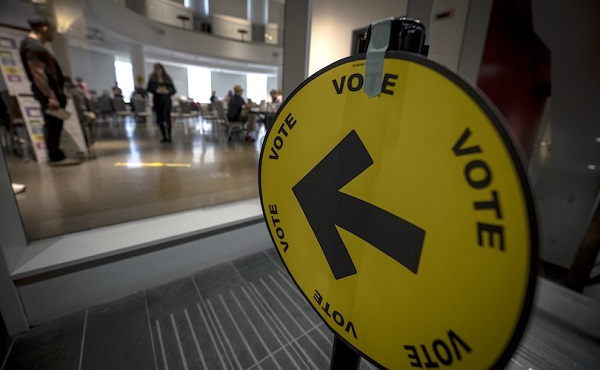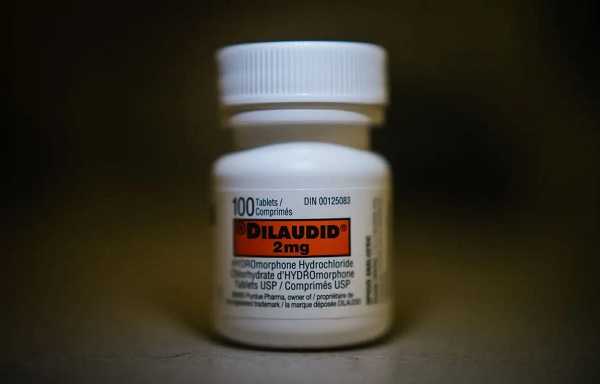Opinion
Speed on Green?

Hey everyone,
As of August 11 the intersections in our city that currently have red light cameras will also now have the ability to issue tickets for speeding through them on green lights.
What do you think of this?
Could we frame this discussion as a speeders tax or a fee-to-speed? Perhaps.
But either way let’s not fool ourselves; these cameras are only marginally effective at making our roads safer. As soon as drivers learn where these cameras are they slow down temporarily and then they defiantly speed up again as soon as they’re out of range. So, yes, these cameras probably do make specific intersections safer. But on the other hand I suspect the gains might be lost if drivers are dangerously slamming on their brakes to avoid having their picture taken as soon as they catch a glimpse of the camera as they speed by. I suppose the data will bear out the fact of the matter. My mind will remain open.
Also, while the focus on catching speeders does give us a good feeling of accomplishment, the question remains; how do we address the other major factors such as distracted and impaired driving? I hear Police ride the bus in some cities and call in distracted drivers they see through the window as they cruise around the city. But that’s a whole other topic.
One thing that has worked well is installing timers at many intersections around our city. I really like how I can see from a distance that I have enough time to safely slow down and stop. So I’d like to put it forward that, if we must have speed-on-green cameras then we should use the money to pay for things like timers at intersections and other things that improve traffic safety.
I also wonder if we should be having the conversation about timing traffic lights better? “Red-Light-Deer” is a social media meme which is growing in popularity. So the bigger picture question here is how can we make traffic flow better in our city?
Lastly, another discussion that we should be having is how to improve safety in our school zones. Since we know that traffic cameras only temporarily slow drivers down and we also know that many drivers are unwilling to temporarily slow down near schools, it seems like there is an obvious solution to the problem, let’s put traffic cameras in school zones. Can we do that? Call it a cash grab, sure, just please don’t run my kids over. The scariest thing to a parent is a speeding car in school zone!
With all of that said, the reality is that we can’t legislate the sort of cultural change that needs to happen. I recently became a defensive driving instructor and this is something that I talk about a lot. People need to obey the rules of the road not because they’re afraid of getting a ticket but because they care about their own safety and respect the safety and well-being of everyone else in their community. This is the ultimate way to be proactive when it comes to road safety. It starts with you and the attitude that you choose to have when you get behind the wheel.
Cheers,
National
Liberals push to lower voting age to 16 in federal elections

From LifeSiteNews
Liberals in Canada, led by MP Nathaniel Erskine-Smith, are petitioning to lower the federal voting age to 16, arguing that ‘informed’ youth should have a voice in elections.
Liberals are petitioning for high schoolers to be allowed to vote in federal elections.
In a July petition introduced to the House of Commons by Liberal MP Nathaniel Erskine-Smith, Liberals are pushing for the voting age for federal elections to be reduced from 18 years old to 16 years old, arguing that youth need a voice in society.
“Sixteen and seventeen-year-olds across Canada are already taking on real responsibilities, from working part-time jobs and paying taxes, to driving, volunteering, and taking on family responsibilities,” the petition stated.
“Young Canadians are informed, thoughtful, and actively involved in their schools, communities, and movements that shape our country’s future,” it continued.
“Extending the voting age to 16 would empower a new generation to participate in democracy while still in school, where habits of civic engagement are more easily built and supported,” the petition declared.
Interestingly, the Liberals’ push to decrease the voting age in Canada comes at a time when young Canadians are increasingly voting Conservative.
In 2015, former Prime Minister Justin Trudeau was wildly popular with Canadian youth, receiving the majority of the young vote and visiting high schools across the country.
However, in the 2025 election, young Canadians favored the Conservative party, which received 41 percent of the votes from Canadians aged 18-34, while Liberals only received 37 percent from the same demographic.
The political shift is largely attributed to rising costs of living, including food and housing, under the Liberal administration.
Trudeau’s carbon tax, framed as a way to reduce carbon emissions, has cost Canadian households hundreds of dollars annually despite rebates. According to the Parliamentary Budget Officer, this year, the tax will cost the average Canadians family up to $911 more this year than they get back in rebates.
Additionally, in 2024, Food Banks Canada reported that 2 million visit food banks each month, a 90% increase from 2019.
Furthermore, directly following a report that Canada’s poverty rate increased for the first time in years due to high inflation spurred by government spending, polls showed that nearly half of Canadians are only $200 from complete financial ruin, and yet Liberals refused to change their policies.
Addictions
After eight years, Canada still lacks long-term data on safer supply

By Alexandra Keeler
Canada has spent more than $100 million on safer supply programs, but has failed to research their long-term effects
Canada lacks long-term data on safer supply programs, despite funding these programs for years.
Safer supply programs dispense pharmaceutical opioids as a replacement for toxic street drugs.
There is a growing body of research on safer supply’s short-term health effects. But there are no Canadian studies that evaluate program participants’ health impacts beyond 18 months.
The absence of research into long-term data on safer supply means policymakers do not understand how safer supply affects participants’ health, substance use or social outcomes over time.
“Long-term data is important because it helps us understand not just short-term health outcomes like reduced overdoses, but also broader impacts on quality of life, stability and health care use,” said Farihah Ali, scientific lead at the Institute for Mental Health Policy Research at CAMH. The Centre for Addiction and Mental Health is one of Canada’s leading centres for addiction research and clinical care.
Pilot projects
Canada’s first safer supply programs were introduced in Ontario in 2016. Those programs were initially small in scope, intended for a small group of high-risk individuals.
In 2020, the federal government began funding safer supply pilot programs across the country. Provinces are responsible for the delivery and regulation of these programs.
B.C. introduced provincewide programs in 2021. Other provinces, such as Alberta, have restricted safer supply access to a very small number of clinics, and have generally shifted away from harm reduction models in favour of recovery-oriented approaches.
According to the Canadian Public Health Association, an advocacy organization, the original goal for safer supply was to reduce deaths and harms associated with the unregulated toxic drug supply. It was not meant to replace addiction treatment, but to rather act as a bridge to further care.
However, a 2023 report by researchers at McMaster University and Simon Fraser University noted safer supply “does not principally operate toward goals of treatment or recovery.” The report describes safer supply instead as an emergency intervention focused on stabilization and survival.
Evidence gaps
There is a small but growing body of short-term studies on the health effects of Canada’s safer supply programs. Most only track participants’ outcomes for up to 12 months.
Some of those studies suggest safer supply may reduce the immediate harms associated with drug use.
A 2024 study found a 91 per cent reduction in the risk of death among high-risk individuals receiving safer supply in B.C. Critics have raised concerns about the study’s methodology, sample size and confounding variables.
In contrast, a March study suggested B.C.’s safer supply and decriminalization policies may be associated with increased hospitalizations. These findings also sparked controversy, with experts debating how well the data isolate causal impacts.
And a comparative study released in April also showed some positive outcomes from safer supply. It too sparked significant expert debate.
‘Arms-length’
Of all the provinces, B.C. has implemented safer supply most broadly. The province’s health ministry did not directly respond when asked about the long-term goals of its safer supply program, or whether B.C. collects longitudinal data on program participants’ health outcomes.
“Evidence shows [safer supply] helps separate people from the unregulated drug supply, manage their substance use and withdrawal symptoms with regulated medications, and helps connect them to voluntary health and social supports,” a Ministry of Health spokesperson told Canadian Affairs in an email.
The ministry did not provide the evidence it referenced.
At the federal level, Health Canada confirmed that, to date, it has funded just two evaluations of safer supply programs, despite spending more than $100 million on safer supply since April 2023.
The first was a short-term study, funded by the federal government’s Substance Use and Addictions Program program. Conducted over four months, that study assessed 10 safer supply programs in Ontario, B.C., and New Brunswick. It documented initial impacts on participants’ lives and program delivery, primarily through qualitative methods such as interviews and surveys.
The second study is an ongoing, “arms-length evaluation” of 11 safer supply pilot programs funded by the Canadian Institutes of Health Research (CIHR), Canada’s federal health research agency.
When asked about long-term research on safer supply, Health Canada referred Canadian Affairs to a 2022 funding announcement about this multi-year evaluation. While the evaluation is being conducted over several years, it is unclear if it includes long-term tracking of patients’ outcomes.
Barriers and resistance
There are a number of factors that make it challenging to evaluate safer supply programs over long periods.
Ali, of CAMH, says unstable, short-term funding can disrupt long-term research.
“When programs are shut down or scaled back, we lose contact with participants and the ability to track outcomes over time,” she said.
Program participants can also be difficult to track over long periods, she says. Many struggle with housing insecurity, health instability and criminalization.
Frontline staff also face burnout and high turnover, she says, limiting support for such research activities.
Additionally, there are tradeoffs between the anonymity needed to encourage patients to access safer supply programs and the ability to collect detailed data.
“Ethical concerns — like not wanting to burden participants or risk their safety or confidentiality — require us to design studies that are trauma-informed and flexible, which adds complexity to long-term data collection,” Ali said.
Julian Somers, a clinical psychologist and professor at Simon Fraser University, says B.C.’s failure to conduct long-term evaluations of its safer supply programs is not just an oversight, but an act of negligence.
“B.C. has some of the best pharmaceutical data systems in the world,” Somers said, referring to PharmaCare and PharmaNet — databases that capture every prescription drug transaction in the province.
Somers says his team previously used PharmaNet data to examine prescribed opioids’ effects on health and social outcomes. In 2017, he proposed a long-term safer supply evaluation using these tools.
In 2017, he proposed a long-term evaluation of B.C.’s safer supply programs.
The province declined.
According to Ali, “Future research should explore how safer supply impacts people’s long-term health, stability and connection to care.”
“We also need to listen to people’s experiences, how safer supply affects their daily lives, their sense of dignity, and their relationships with care providers through qualitative mechanisms.”
This article was produced through the Breaking Needles Fellowship Program, which provided a grant to Canadian Affairs, a digital media outlet, to fund journalism exploring addiction and crime in Canada. Articles produced through the Fellowship are co-published by Break The Needle and Canadian Affairs.
-

 Alberta2 days ago
Alberta2 days agoMedian workers in Alberta could receive 72% more under Alberta Pension Plan compared to Canada Pension Plan
-

 COVID-192 days ago
COVID-192 days agoSen. Rand Paul: ‘I am officially re-referring Dr. Fauci to the DOJ’
-

 Crime2 days ago
Crime2 days agoDEA Busts Canadian Narco Whose Chinese Supplier Promised to Ship 100 Kilos of Fentanyl Precursors per Month From Vancouver to Los Angeles
-

 Education2 days ago
Education2 days agoTrump praises Supreme Court decision to allow dismantling of Department of Education
-

 Business2 days ago
Business2 days agoConservatives demand probe into Liberal vaccine injury program’s $50m mismanagement
-

 International1 day ago
International1 day agoMatt Walsh slams Trump administration’s move to bury Epstein sex trafficking scandal
-

 National1 day ago
National1 day agoDemocracy Watch Blows the Whistle on Carney’s Ethics Sham
-

 Business2 days ago
Business2 days agoCanada must address its birth tourism problem










You must be logged in to post a comment Login